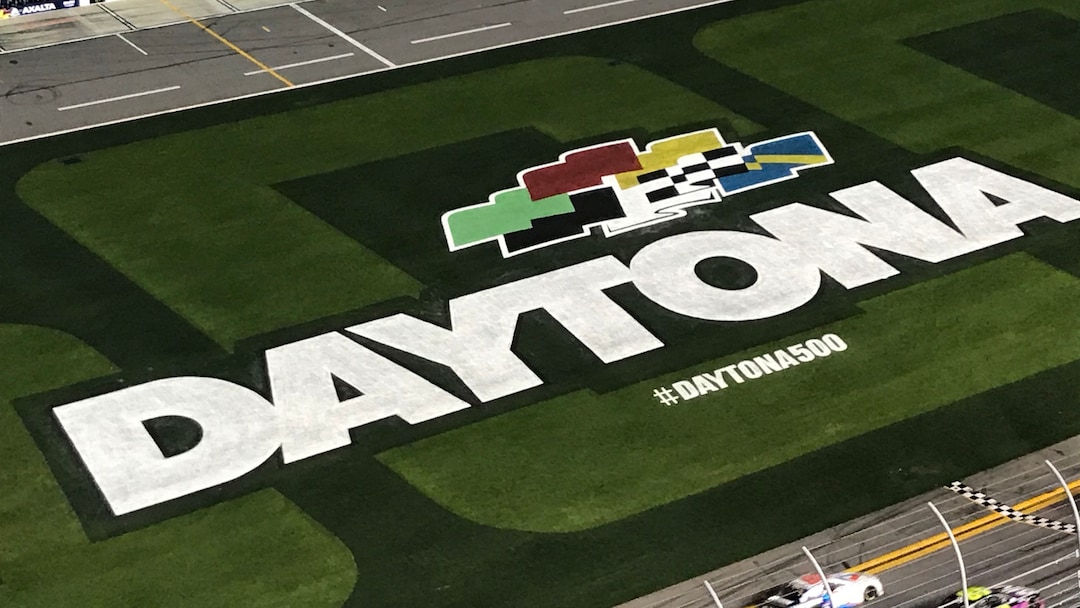I have driven the famous 2.5-mile tri-oval at the Daytona International Speedway and experienced speeds of about 190 mph in a race car mere inches from the wall on its high banks. Both experiences happened on the same weekend, albeit not at the same time.
Don’t get me wrong, both experiences were sensational. My time at the Daytona 500 was filled with unforgettable perks.
I rode in a Toyota Supra with NASCAR rookie driver Christopher Bell at the wheel and felt the incredible g-forces during three hot laps. The track narrows sharply, and the banking feels almost mountainous at the speeds these professionals handle.
I also drove a 2020 Toyota Tundra around the oval, one of 38 lucky chauffeurs behind the wheel of a pickup with flags waving, while a driver stood in the bed for his introductory lap before the race’s start. My celebrity passenger was Michael Annett, who drove Chevy #1 in the Xfinity Series race on Saturday. He had won the NASCAR Racing Experience 300 at Daytona in 2019 and placed ninth for the season before a challenging start this year.
The lap was more nerve-wracking than you’d imagine—it was perhaps the most stressful I’ve ever been while driving 20 mph. With windows down, headlights and hazards on, and the tailgate unlocked for the passenger, I had to keep my speed steady as he waved to fans. A fan even yelled, “Smile!” as I cruised by, prompting me to grin for the rest of the ride. It was an incredibly rewarding moment, allowing me to relax and enjoy the experience.
Surprisingly, I felt more relaxed flying around the course with Bell at insane speeds. The fire-retardant suit and mandated HANS head and neck restraint provided reassurance, helping me withstand the intense g-forces during the ride. I was securely harnessed in, and as the car banked, the forces pushed me deeper into the seat, creating a feeling akin to an enormous hand pressing down on my chest. Still, taking deep breaths allowed me to appreciate the moment fully.
As the engine roared louder and the walls of the track seemed to loom higher, there was a heightened sense of excitement and danger. All too quickly, however, it came to an end, and I found myself contorting to exit the car, my helmet feeling larger than the window opening. I couldn’t hold back my laughter, influenced by the sheer adrenaline of the experience.
TRD Is a Busy Place
About 250 people work for TRD, Toyota’s North American racing engineering arm, which supports both Toyota and Lexus race cars. They install and test engines, optimizing pushrod V-8s to their maximum potential. With around 100 engines available, 50 are in active competition and the other 50 are being tested. Cars at Daytona are equipped with different horsepower regulations, with “big motors” offering about 750 hp and “little motors” restricted to 550 hp. This adds an extra layer of strategy to the race.
Next-Gen NASCAR Stock Car Not a Priority—Yet
The current NASCAR Cup Series employs the sixth-generation car that has been around since 2013. The switch to a next-generation car is slated for the 2021 season, with significant changes expected except for the driver’s seat mold. Drivers and engineers are focused on the current season’s performance, gearing up for the switch as the season progresses.
Returning Champion’s Perspective
Defending champion Denny Hamlin expressed that returning as a titleholder was an exciting experience, especially following an emotional win on the heels of the loss of J.D. Gibbs. He noted that strategy was key—by hanging back early and then making moves later, the team effectively utilized the collaborative approach Toyota is known for on the track.
The Hour Before Racetime
In the hour leading up to the race, Hamlin maximizes his time by eating and recharging. After the driver’s meeting, he focuses on stretching and going over notes from the crew chief to keep strategies fresh in his mind.
Luck vs. Skill
Crashes are an unavoidable aspect of NASCAR racing, leading to what are commonly referred to as “big ones.” Hamlin understands that maintaining focus is essential across the entirety of the 500-lap race. The communication with the spotter is crucial, providing essential information while allowing drivers to concentrate on the race ahead. Some experts argue that Daytona racing relies 60% on talent and 40% on luck—an intriguing blend that keeps the sport dynamic.
Hijinks in the Pits
In the NASCAR world, light-hearted antics can occur in the pits. Crew chief Jason Ratcliff shared fun anecdotes, showcasing the playful nature often present amid the pressure of competition. Just like in Hollywood portrayals of racing, the charm of NASCAR pits can often mirror some of those cinematic moments.
Is Internet Racing Bona Fide?
Hamlin also acknowledges the growing presence of eNASCAR in online racing communities. With many talented young individuals engaging in virtual racing, it promises to excite a new generation and fuel interest in NASCAR—providing a vital pathway to real-world racing opportunities.




